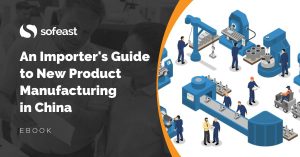Many articles have explained why Shenzhen is the best place to develop a new electronic hardware product that is targeting a high sales volume.
If you want to do things faster and cheaper than in your home country, this is the place to be. Some founders stay in their country and work on the design, marketing, and distribution, and they pick a local partner for handling some of the engineering work. Others decide to relocate to Shenzhen — these ones are often interested in getting help from incubators in China.
What is the value of incubators in China?
(Or their variant the “accelerator”, for startups a bit more advanced in their journey, and which tends to follow a more structured approach?)
- Advice from experienced professionals who ‘have seen it before’
- Access to a network of vetted resources (some internal, some from service providers)
- Help — and sometimes healthy competition — among the companies accepted in the incubator
- Funding
- Improved access to angel investors and venture capital investors, once some traction is demonstrated
Let’s look at the two major incubators for developing new electronic products:
HAX
A number of startups work in the HAX facility, in the heart of the electronic components market in Shenzhen (they are 200 meters away from our office). It is the major accelerator here.
A new cohort of startups starts going through the program every 4-5 months. They get an office to work and to start putting prototypes together.
They typically spend 4-8 months in Shenzhen on technical aspects (developing the product), and then 2-3 months in San Francisco on sales and fundraising.
HAX is owned by a venture capital fund. It is a way for them to notice hardware startups with high potential.
Shenzhen Valley Ventures (SVV)
They have in-house engineers to help develop a new product. Beyond that, the concept is not exactly the same. They do NOT offer seed funding as part of the program — but financing may come after manufacturing. They seem not to have cohorts.
The key difference seems to be their greater focus on the technical side (they seem to somehow take responsibility to get the product to production-ready state). HAX also provides access to technical resources but is not taking the work in their own hands. Another difference is, HAX tries to help with the marketing/distribution and fundraising aspects too.
SVV position themselves as the next logical step after an accelerator: A Techcrunch article mentions that one of the largest investors in SVV is a relatively large manufacturer that supplies Samsung, Xiaomi, and others. It means a promising product going through SVV will have an opportunity to be made in a large tier-1 factory. (I have to guess the ‘fit’ is not always good, though.)
A Techcrunch article mentions that one of the largest investors in SVV is a relatively large manufacturer that supplies Samsung, Xiaomi, and others. It means a promising product going through SVV will have an opportunity to be made in a large tier-1 factory. (I have to guess the ‘fit’ is not always good, though.)
What alternatives for developing a new hardware product in China?
As I wrote in the opening, some founders prefer staying in their country and building their organization, outside any tight framework. For example, if they raised money on Kickstarter or Indigogo and they want to stay mostly in their country, a Shenzhen-based accelerator makes little sense.
Their major alternatives are:
- Find a manufacturer that has already developed relatively similar products, and rely on their engineering muscle, and/or
- Hire a few engineers who will work closely with the manufacturer, and/or
- Work with a Shenzhen-based DFM & engineering firm
I wrote ‘and/or’ because they often end up relying on 2 or 3 of these approaches. Many of our clients are in such a case.
For example, the manufacturer is very familiar with certain medical regulations, the buyer has competencies in software and electronics, but they need our help with mechanical design & engineering.
In some cases, we do several rounds of prototypes before starting to look for an assembler because the design still needs a lot of adjustment and few factories would have the patience to work on development for 6-12 months.
So, there you go… There are many options and it is often necessary to find the right mix of competencies. Starting from scratch in Shenzhen no network is tough, so you definitely need to work either as part of an incubator or with service providers.
Does it make sense?
Are you designing, or developing a new product that will be manufactured in China?
Sofeast has created An Importer’s Guide to New Product Manufacturing in China for entrepreneurs, hardware startups, and SMEs which gives you advance warning about the 3 most common pitfalls that can catch you out, and the best practices that the ‘large companies’ follow that YOU can adopt for a successful project.
It includes:
- The 3 deadly mistakes that will hurt your ability to manufacture a new product in China effectively
- Assessing if you’re China-ready
- How to define an informed strategy and a realistic plan
- How to structure your supply chain on a solid foundation
- How to set the right expectations from the start
- How to get the design and engineering right
Just hit the button below to get your copy (please note, this will direct you to my company Sofeast.com):

